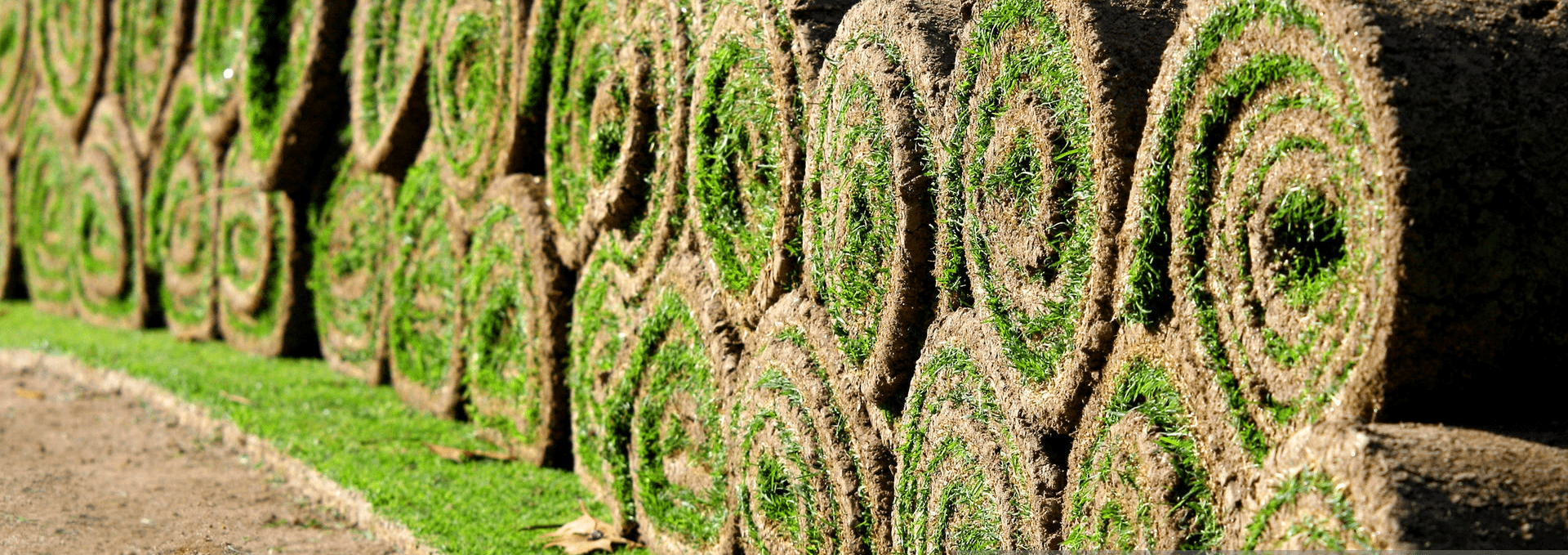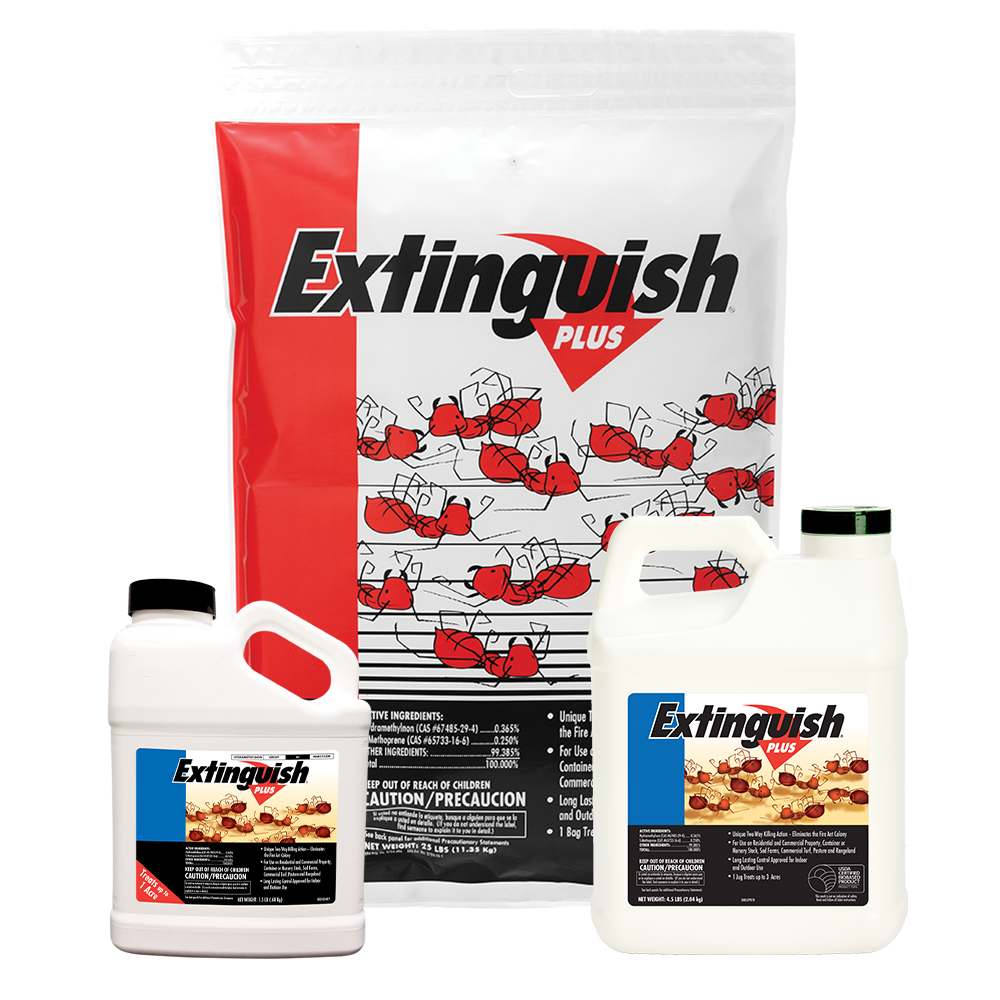Turf Fire Ant Control
Protect Your Turf with Extinguish® Plus
Pesky and dangerous ants, especially fire ants, do not belong on your turf. Not only are they a danger to human and wildlife with their painful stings, but equipment can also suffer serious damage. Young colonies of fire ants can thrive beneath the radar undetected on commercial turf until they have time to build up their tall hardened mounds. According to NC State Extension Publications, fire ants build these mounds to escape rising water after heavy rains, but they continue to produce mounds in warm temperature soil as their numbers grow.
Central Life Sciences has an effective, economical solution to fire ant threats on your commercial turf.
Extinguish® Plus
- Designed to offer both short-term and long-term relief from fire ants on commercial turf
- Combines the killing power of an adulticide, Hydramethylnon, and the long-lasting control of an insect growth regulator (IGR), (S)-methoprene
- Colony reduction begins in about 1 week and colony elimination may be seen within 2 weeks
- Broadcast – 1.5 pounds of product per acre
- Available in 1.5 lb., 4.5 lb. and 25 lb. containers
- USDA Quarantine Approved
Extinguish® Plus is formulated for dry conditions and should not be applied within 6 hours of a rain event. Fire ants will not be attracted to wet bait. Take care to apply product when turf is dry from dew or irrigation.
Learn more about the fire ants Extinguish® Plus can control on your commercial turf:
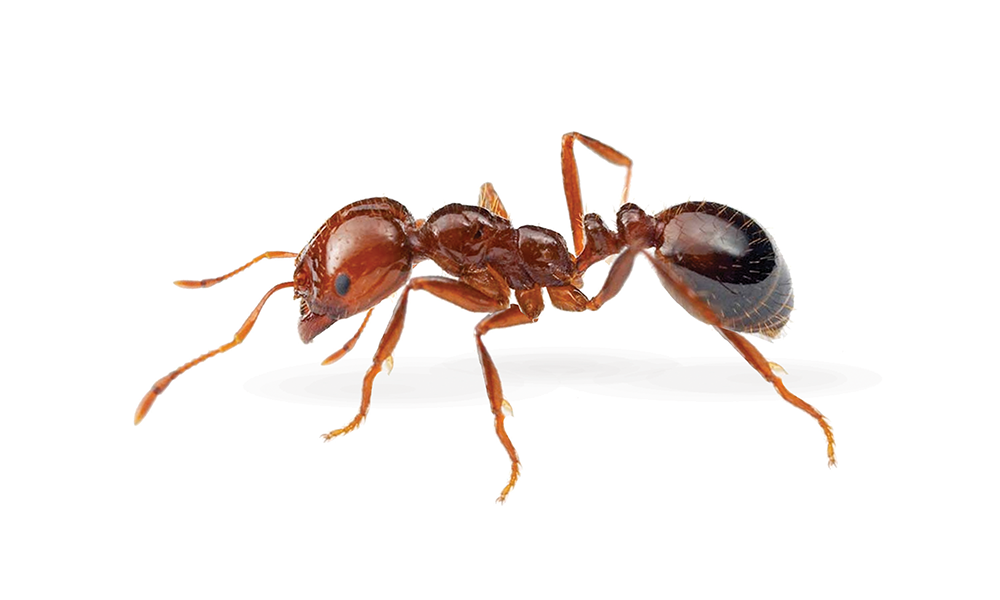
Red Imported Fire Ants
Both imported and native red fire ants damage costly agriculture equipment with their tall, hardened mounds. They adversely impact your turf and your investment.
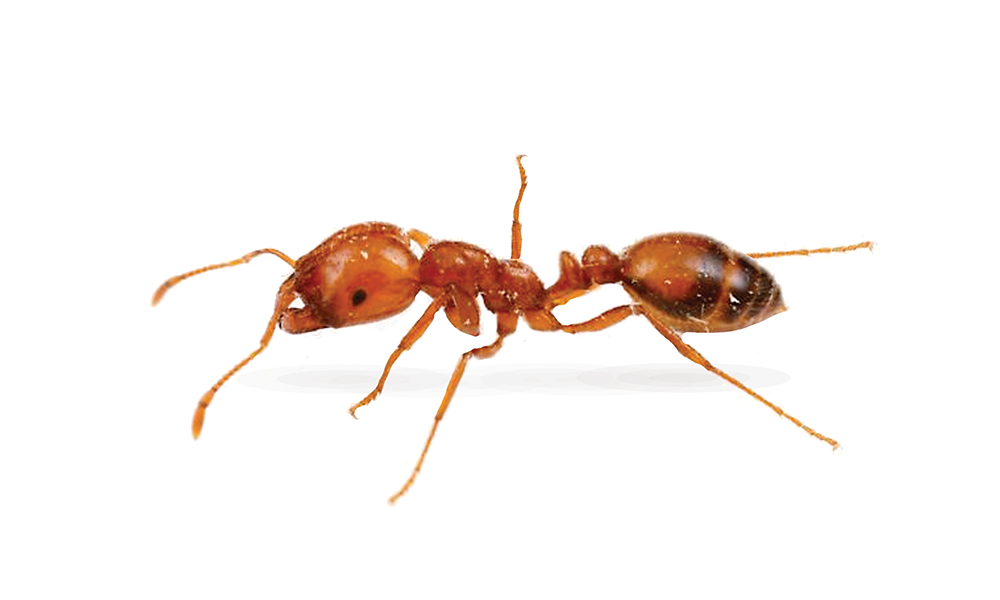
Southern California Fire Ants
Mostly found in Southern California, this fire ant is typically smaller than the red imported fire ant, but is also capable of extensive damage to your turf and painful stings. Particularly sensitive to footsteps, the Southern fire ant colony is poised to attack given any disturbance to their mound.
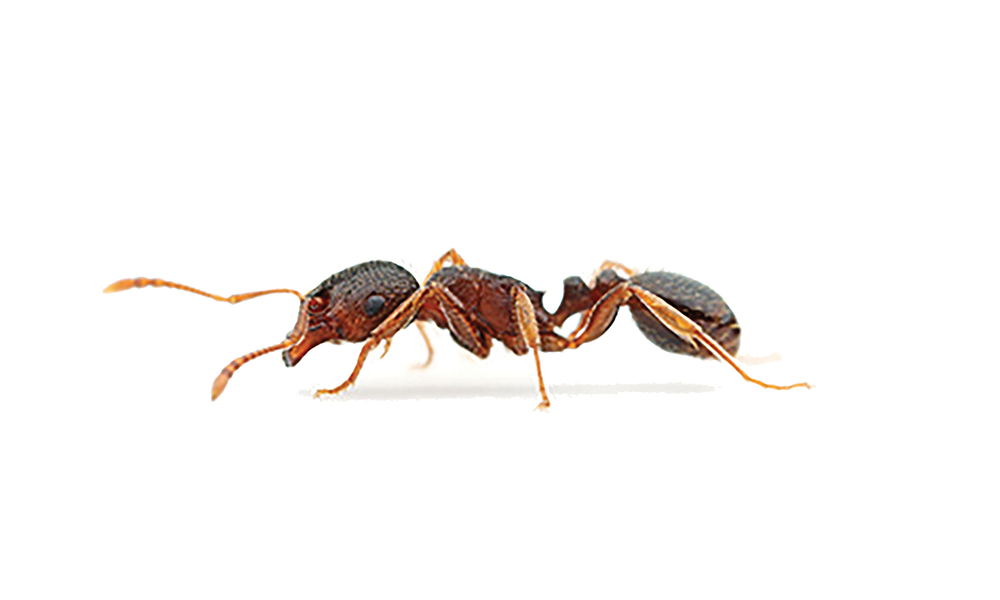
Harvester Ants
With underground nests and small mounds, harvester ants feed on seeds and are also capable of painful stings that can be fatal to small animals. They pose a threat to both wildlife and people when their colonies are disturbed.
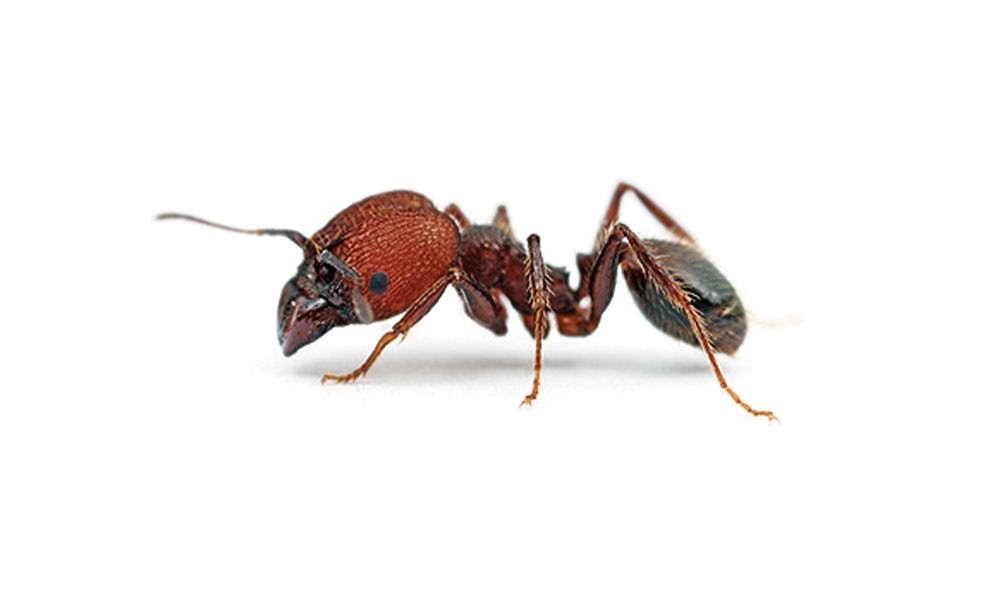
Big-Headed Ants
Big-headed ants nest in soil, typically underneath debris and equipment left on the ground. As indicated by the name, they are identifiable by their big heads, and they feed on seeds and honeydew.
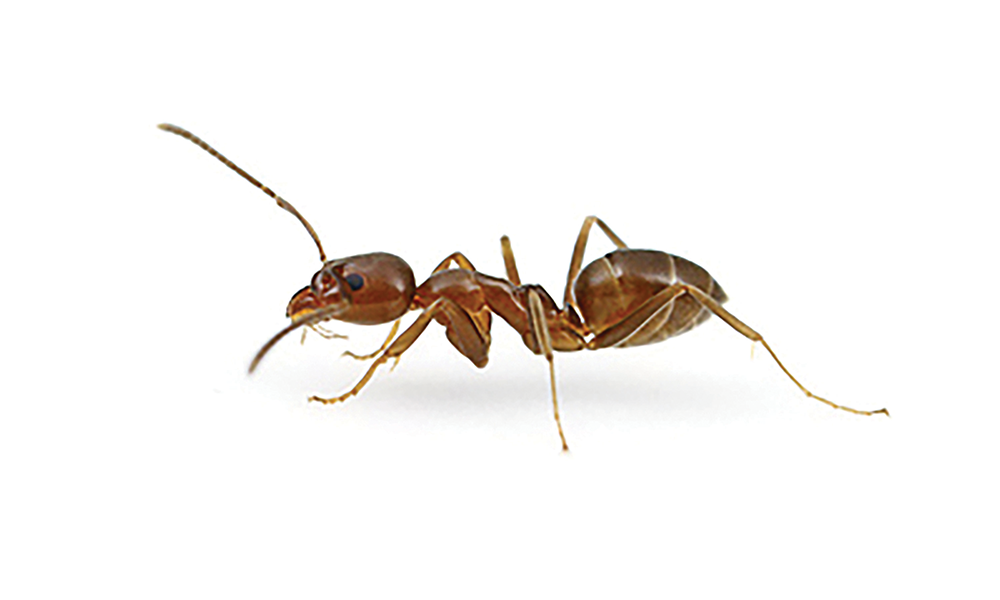
Argentine Ants
Argentine ants have a small stature, and build shallow nests underground. What makes them particularly troublesome is that one colony can have multiple queens, which makes them poised for rapid growth.
